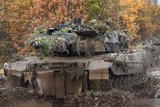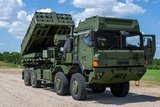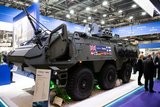US Army extends CROWS contract with Kongsberg
Kongsberg provides the US Army with its M151 and M153 remote weapons stations. (Photo: Kongsberg)
Kongsberg Defence & Aerospace has obtained an extension to its five-year IDIQ contract with the US Army under the Common Remotely Operated Weapon Station (CROWS) programme.
The contract modification is worth $499.17 million 'and is contingent upon future demand and annual allocations’, Kongsberg noted on 11 May.
According to the DoD, work will be completed by 14 September 2023.
The IDIQ contract was awarded in September 2018 as the third five-year contract with the US Army for M151 and M153 remote weapons stations under the CROWS programme.
‘The modification will support CROWS acquisition for platforms across all uniformed services and will specifically support needs for robotic and tactical vehicles, static and mobile base security, as well as littoral and maritime applications,’ a Kongsberg Defense US spokesperson said.
‘CROWS Tech Refresh systems and the supporting fire control network are already key enablers for the [US] Army’s emerging unmanned ground vehicle programmes, including Robotic Combat Vehicle (RCV) and Small Multipurpose Equipment Transport (SMET),’ the spokesperson added.
In addition to developing the remote lethality fire-control system for RCV and SMET, Kongsberg is also delivering a Multi-User Multi-Station capability to the US Army to facilitate advanced target sharing and cooperative engagement.
Related Equipment in Defence Insight
More from Land Warfare
-
![Hungary set to begin using Hero 400 loitering munitions]()
Hungary set to begin using Hero 400 loitering munitions
Developed by Israel's Uvision and with systems being sold in the thousands to multiple European NATO countries and the US, the Hero family of loitering systems is also in production in the US and Italy, the latter through Rheinmetall.
-
![Lockheed Martin to look further afield for GMARS rocket system opportunities]()
Lockheed Martin to look further afield for GMARS rocket system opportunities
The HX truck is already in use in many NATO and allied countries around the world as a logistics vehicle and carrier for high-value systems, including missile firing weapons, so its use for the Global Mobile Artillery Rocket System makes logistical sense.
-
Medium knocked out of British Army LMP, with CAVS as heavyweight champion
As the British Army seeks to modernise and consolidate its diverse vehicle fleet, yet another change in direction is underway.























